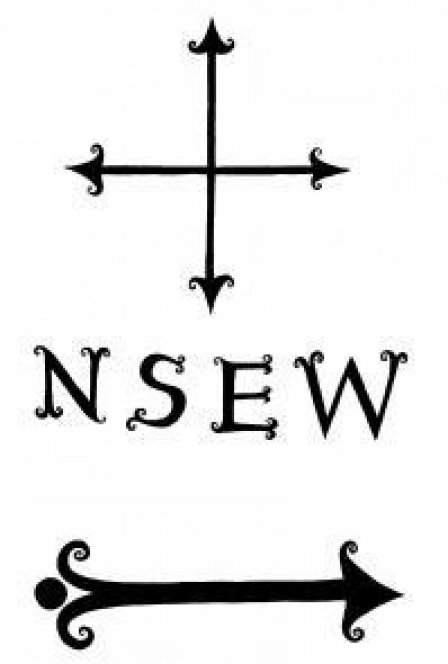“Experimental film is a term that can send movie buffs running for the fire exits.” —from the Kickstarter video for the campaign to fund production for NSEW
Chalk it up to the city’s proletarian roots, I guess, but there is nothing that the arts community in Portland, Oregon seems to fear more than being branded as “pretentious.” Experimental film, modern composition, and conceptual art exist in Portland, sure, but they are more marginalized than they would be in almost any other “hip” urban center in the country.
The result is a mixed blessing. On the one hand, it gives even the city’s “fine art” a distinct regional character that is decidedly more folksy and accessible than other, more culturally established cities. Conversely, though, it often leads to an avoidance of (or at least apology for) ideas and forms that are more obtuse and abstract, leaning more towards the decorative or outwardly entertaining in a way that may be anathema in other parts of the world. The best art of the Pacific Northwest thumps with a rock and roll heart, but when that wears thin one finds themselves longing for more John Cage, less “Louie Louie.”
Viewing NSEW, Vanessa Renwick’s new career-spanning compilation of experimental film works, through the lens of this understanding makes it a substantially more endearing collection. Renwick’s work is Portland through and through, but at its best, it epitomizes the aesthetic. If you meet it with at least a tacit understanding of its milieu, you allow it to shine on its own terms, and shine it does.
The best films on NSEW could, in fact, be used to teach a class on PacNW aesthetics. There is a distinct look and sound to the region’s post-punk art that is as sloppy and mossy as the clime in which it was created, and much of Renwick’s work fits well into this tradition (cf. Smegma, Wipers, early K records, Gus Van Sant’s Mala Noche, etc.). Toxic Shock and U.C.A. Box are perfect PacNW punk films, transgressive and dark without sacrificing fun. Yawn, made at the height of the 90s indie boom (a young Miranda July even makes an appearance), bears a sweet warmth not unlike listening to a Kicking Giant 45 on an awkward first date. They are not necessarily structurally or spiritually challenging films, but they more than make up for it in kicks, and they look beautiful to boot.
Renwick’s documentary work is typically more aesthetically Spartan, often utilizing mid-grade video technology that doesn’t do much for the eyes. That said, the subject matter often justifies the means: Richart and Satan’s Holiday find Renwick doing for her home what Jeff Krulik has been doing for Baltimore since Heavy Metal Parking Lot, documenting the region’s outrageous eccentrics with sincere sympathy and affection.
Whether intentional or not, Worse, a short film ostensibly designed to shame strident pro-lifers, proves to be the most complex film in the set. With the ambiguity and brevity of a haiku, Worse gives voice to an apparently kindly old man who is also a rabid anti-abortionist picketing outside a clinic, the sort of character who many TMT readers might find easy to hold in contempt from a distance. Conversely, we see two pro-choice women with accordions (ahem, Portland) performing an agitprop response to “his kind” which, in juxtaposition, seems markedly mean-spirited. The resulting ambiguity does nothing to challenge one’s beliefs about abortion rights (one way or the other, I’d venture), but it does call into question the proper way to approach the debate. This reading is likely skewed from the original intent, but it’s fascinating nonetheless.
Not every film on NSEW is as successful. Some of the films match footage with narration from Renwick recorded years after the video. The text seems tacked on to justify or contextualize the footage, and while both are enjoyable enough on their own, they don’t always gel. Other pieces may be more impactful as locally-screened sociopolitical statements, but are less effective as stand-alone films.
That acknowledged, it must also be said that NSEW is a labor of love for Renwick, and like the best Portland art, it is as reticent to be polished and commercial as it is to be pretentious. Any perceived shortcomings serve to paint a fuller portrait of Vanessa Renwick as an artist; community-minded as the work is, it also serves to paint a fuller portrait of Portland and its surroundings, warts and all. In that regard, NSEW is a humble triumph.

